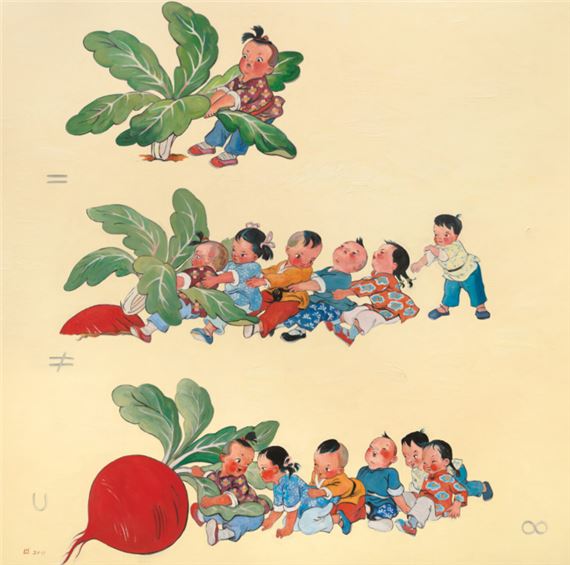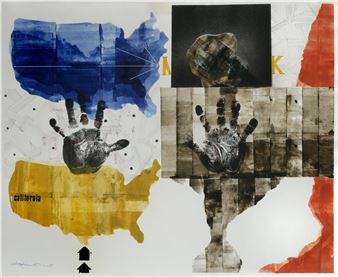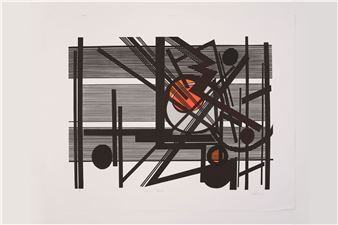Hung Liu: Happy and Gay
Born in Changchun, China in 1948, Hung Liu experienced war, famine, and political turmoil before emigrating to the United States in 1984. Coming of age during the era of Mao Zedong, Liu was sent to the countryside, where she lived and worked on a communal farm for four years for “proletarian re-education” during the Cultural Revolution (1966-76). Trained as an artist in the official Socialist Realist style, Liu was accepted to graduate school in the Visual Arts Department of the University of California, San Diego, but was denied a passport by the Chinese government for four years. At UCSD, she studied with influential feminist art historian Moira Roth as well as with conceptual artist Allan Kaprow, who invented “Happenings,” live performances that combined elements of painting, music, dance, poetry, and theater. At the time of her death in 2021 she was Professor Emerita at Mills College, where she taught for twenty-four years.
Known for paintings based on historical Chinese and American Dust Bowl-era photographs, Liu portrayed refugees, street performers, laborers, soldiers, prisoners and displaced women and children. As a painter, she challenged the authority of archival photographs by cropping the original compositions, enlarging them from handheld objects to monumental canvases, and imbuing the images with color and texture.
Hung Liu: Happy and Gay, is a travelling exhibition that originated from Georgetown University Art and Curatorial Studies graduate students in collaboration with Dr. Dorothy Moss. The exhibition presents a selection of Liu’s works from 2011-2013. In the series, Liu revisits cartoons of her youth that were published in children’s books and primers (known as xiaorenshu). Like the Dick and Jane readers circulating in the United States during the postwar era, the illustrations were used in China to socialize children by instilling values such as hard work, family unity, and patriotism. Liu’s reformulation of this palm-size historic childhood imagery into large-scale, richly-painted contemporary canvases not only turns mass-produced illustrations into paintings but also raises questions at the intersection of ideology, propaganda, and education. Liu invites viewers to think critically about the words and images that shape our collective identities, challenging us to reimagine them, a form of rewriting history. As she often said, “history is a verb. It is constantly flowing forward.”

Recommended for you
Born in Changchun, China in 1948, Hung Liu experienced war, famine, and political turmoil before emigrating to the United States in 1984. Coming of age during the era of Mao Zedong, Liu was sent to the countryside, where she lived and worked on a communal farm for four years for “proletarian re-education” during the Cultural Revolution (1966-76). Trained as an artist in the official Socialist Realist style, Liu was accepted to graduate school in the Visual Arts Department of the University of California, San Diego, but was denied a passport by the Chinese government for four years. At UCSD, she studied with influential feminist art historian Moira Roth as well as with conceptual artist Allan Kaprow, who invented “Happenings,” live performances that combined elements of painting, music, dance, poetry, and theater. At the time of her death in 2021 she was Professor Emerita at Mills College, where she taught for twenty-four years.
Known for paintings based on historical Chinese and American Dust Bowl-era photographs, Liu portrayed refugees, street performers, laborers, soldiers, prisoners and displaced women and children. As a painter, she challenged the authority of archival photographs by cropping the original compositions, enlarging them from handheld objects to monumental canvases, and imbuing the images with color and texture.
Hung Liu: Happy and Gay, is a travelling exhibition that originated from Georgetown University Art and Curatorial Studies graduate students in collaboration with Dr. Dorothy Moss. The exhibition presents a selection of Liu’s works from 2011-2013. In the series, Liu revisits cartoons of her youth that were published in children’s books and primers (known as xiaorenshu). Like the Dick and Jane readers circulating in the United States during the postwar era, the illustrations were used in China to socialize children by instilling values such as hard work, family unity, and patriotism. Liu’s reformulation of this palm-size historic childhood imagery into large-scale, richly-painted contemporary canvases not only turns mass-produced illustrations into paintings but also raises questions at the intersection of ideology, propaganda, and education. Liu invites viewers to think critically about the words and images that shape our collective identities, challenging us to reimagine them, a form of rewriting history. As she often said, “history is a verb. It is constantly flowing forward.”
Artists on show
Contact details


 ARTISTS
ARTISTS















